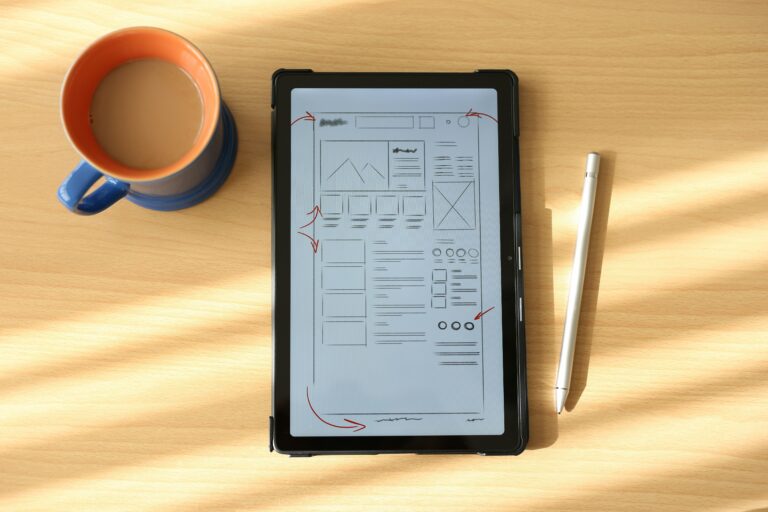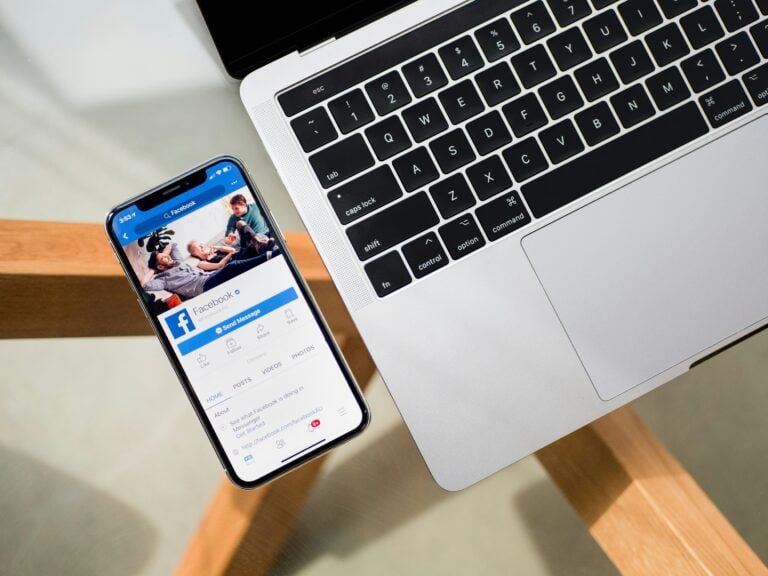The User Experience Director usually reports into the CEO or Chief Product Officer, depending on the business type or structure. They are directly responsible for overseeing the Head of User Experience (UX), as well as responsible for the output and performance of the User Experience team as a whole.
User Experience Director / UX Director roles
If you are looking for a User Experience Director job role or would like to find out how to become a UX Director, what skills you need, and what salaries are on offer, you will find a complete guide below.
If you’re an employer looking to recruit a UX Director position, please see our product design and UX recruitment services page, and the full overview of our services to employers. If you need to hire and would like our services, contact us today.
What is a UX Director?
A UX Director is a senior-level role responsible for overseeing and leading the user experience design strategy and initiatives.
A UX Director combines a deep understanding of user-design principles with strategic thinking and leadership skills to ensure that products and services meet the needs and expectations of users.
The primary role of a UX Director is to define and execute the overall user experience vision and strategy, ensuring a consistent and seamless experience across various digital platforms and touchpoints.
UX Director responsibilities
Strategic leadership: Defining the long-term vision and strategy for user experience design, aligning it with business objectives and goals. They establish design principles, guidelines, and best practices to guide the development of user-centred products and services.
Team management: Leading and managing a team of UX professionals, providing guidance, mentorship, and support. They ensure the team’s collaboration, growth, and adherence to design processes and methodologies.
User research and insights: Overseeing user research activities to gain a deep understanding of user needs, behaviours, and motivations. They utilize research findings to inform design decisions and validate design solutions.
UX design and prototyping: Providing expertise in user interface (UI) design, interaction design, and information architecture. They oversee the creation of wireframes, prototypes, and visual designs to communicate and test design concepts.
Stakeholder management: Collaborating with cross-functional teams, including product managers, developers, and stakeholders, to ensure alignment and a shared understanding of user experience goals.
Usability testing and evaluation: Developing and implementing usability testing strategies to validate design decisions and uncover areas for improvement. They analyse user feedback and metrics to drive continuous improvement in the user experience.
Industry awareness: Staying up to date with the latest trends, technologies, and best practices in user experience design. They provide thought leadership and guidance on emerging UX trends and innovations.
UX Director salary
A candidate should expect job roles to be advertised between £85,000 to £110,000 to reflect the expertise and leadership responsibilities at this level.
The salary of a UX Director in the UK is influenced by several factors and can vary significantly. These factors include the individual’s level of experience, the geographical location, the industry they work in, and the size of the company.
However, it’s worth noting that this salary range can fluctuate due to economic conditions, market demand, and the company’s willingness to invest in user experience.
UX Director job description
A typical User Experience Director / UX Director job description will read something like the one below:
The UX Director will lead, develop and define the user experience strategy across various digital platforms. A key part of this role is to identify and understand the current and emerging customer behaviour and the latest in technology trends.
The UX Director’s main responsibilities:
- Deliver innovative end-to-end user experiences that meet business objectives and consumer needs
- Contribute to early-stage discovery by understanding the problem, generating design principles, developing models and concepts to fit
- Own the overall UX vision including strategy, wire-frames and prototypes of all product lines
- Lead a team of internal product designers to success, including mentoring, coaching and all development needs
- Design all UX processes allowing the team to function at maximum efficiency and effectiveness
- Lead all consumer testing and experiments to inform and evaluate experiences
- Communicate design decisions, design changes and requirements through presentations and other documentation where required
- Manage and grow the UX team
To be successful in this UX Director role, you will:
- Have 10+ years’ experience as a UX Designer
- Have at least 3 years’ previous experience in leading product design teams, with at least 3 team members
- Experience developing UX strategies across multiple product portfolios
- Experience designing complex, data-intensive applications
- An understanding of design, usability and research best practices
UX Director CV: what are employers looking for?
Here are some examples of achievements that employers value and how they could be effectively displayed on a CV:
Successful UX strategy implementation
– Highlight specific instances where you formulated and executed UX strategies that positively impacted user satisfaction and business outcomes. For example:
“Led the implementation of a data-driven UX strategy resulting in a 30% increase in user engagement and a 20% decrease in customer support tickets.”
“Developed and executed a mobile-first design approach, resulting in a 25% improvement in mobile conversion rates and a 15% increase in app downloads.”
User experience metrics
– Showcase your ability to measure and optimize user experience metrics, such as conversion rates, bounce rates, or customer satisfaction scores. For instance:
“Optimised the onboarding process, reducing user drop-off rates by 40% and increasing user retention by 25% within three months.”
“Conducted usability tests and implemented iterative design improvements, resulting in a 15% increase in average session duration and a 20% decrease in user errors.”
Team leadership and mentorship
– Demonstrate your leadership skills by highlighting instances where you effectively led and mentored design teams, fostering their growth and delivering exceptional results. For example:
“Managed a team of five UX designers, fostering a collaborative environment and achieving a 30% improvement in team productivity and efficiency.”
“Mentored junior designers, providing guidance and support that resulted in their successful career advancements and contributions to award-winning projects.”
Successful product launches
– Showcase your ability to deliver successful user-centred products or features by highlighting their impact on user adoption, revenue, or market share. For instance:
“Led the design and launch of a new e-Commerce platform, resulting in a 20% increase in online sales and a 15% growth in customer acquisition within the first quarter.”
“Collaborated with cross-functional teams to launch a mobile app feature that received a 4.5-star user rating and was featured in top industry publications.”
User research and insights
– Emphasise your expertise in conducting user research and translating insights into actionable design decisions. For example:
“Led user research initiatives, including user interviews, surveys, and usability testing, resulting in the identification of key pain points and the successful redesign of the checkout process, leading to a 25% increase in conversions.”
“Implemented a user-centred design approach based on extensive user research, resulting in a 40% reduction in user errors and a 20% improvement in task completion rates.”
UX Interview questions
View our guide to User Experience interview questions, with 47 example questions that employers normally ask at interview.
Useful resources and tools
As a UX Director, staying updated with the latest resources, tools, and software can greatly enhance your productivity and career development. Here are eight examples of valuable resources and tools that can assist you in your role:
Nielsen Norman Group – A leading authority on user experience research and design, providing extensive resources, articles, and training programs. Visit their website at https://www.nngroup.com/
InVision – A versatile prototyping and collaboration platform that allows UX Directors to create interactive mockups, gather feedback, and streamline the design process.
Miro – An online collaborative whiteboarding platform that facilitates visual thinking, ideation, and team collaboration.
Optimal Workshop – A suite of user research tools, including card sorting, tree testing, and usability testing, to assist UX Directors in conducting effective user research.
Whimsical – A collaborative wireframing and diagramming tool that allows UX Directors to quickly create user flows, wireframes, and mind maps.
UX Design Weekly – A curated newsletter that delivers a collection of valuable UX-related articles, resources, and design inspiration straight to your inbox every week.
DesignBetter.Co – A comprehensive platform offering design podcasts, books, and resources from industry experts, providing valuable insights for UX Directors.
User Experience Director FAQs
- How do I become a User Experience Director?
- To be successful in this UX Director role, you will normally require 10+ years’ experience as a UX Designer and have at least 3 years’ previous experience in leading product design teams.



